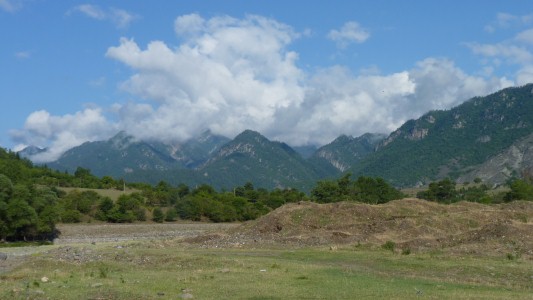
The inaccessible nature reserve?
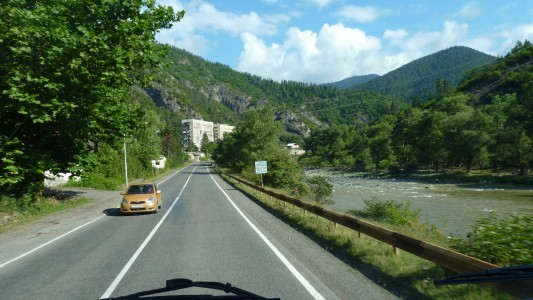
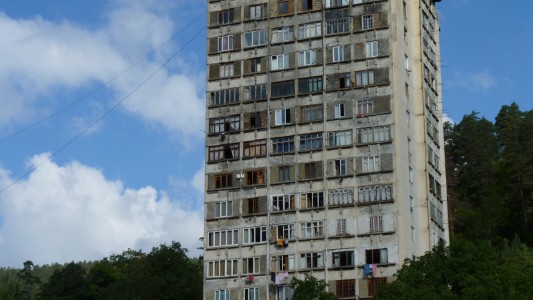
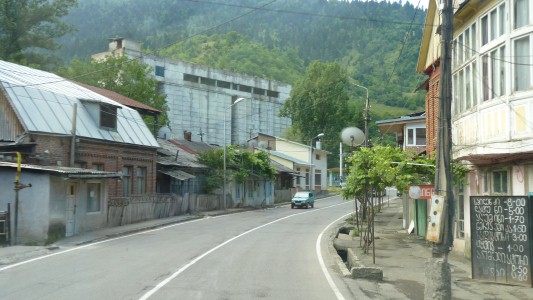
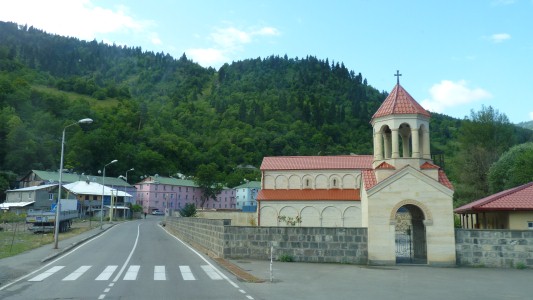
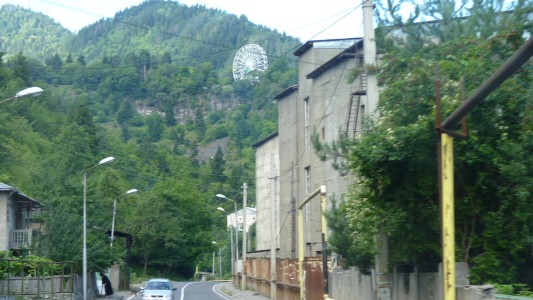
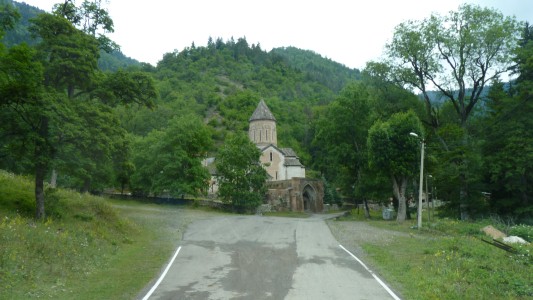
Probably time to whinge about our Garmin map of Georgia. It only knows about the very major roads, and they are sometimes wildly out.
iGo is more honest and doesn't have Georgia.
Back to paper and computer maps.
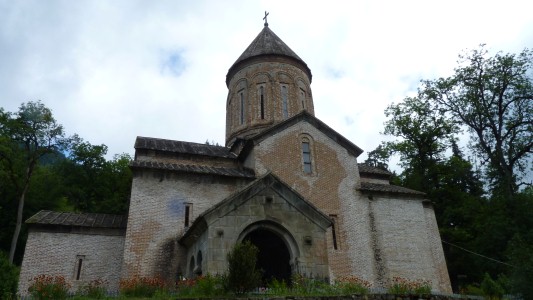
No photographs inside.
Basically unrestored, unrenovated, unconverted, unmodified, unadulterated, unreconstituted, unrepaired, and un-anything elsed.
Despite showing their obvious age the frescoes were quite captivating.
Difficult to describe what it means, after all the other sites we've visited, to look at something of that age, knowing it to be original, without the need to see through subsequent interpretation, destruction or restoration.
A moving sense of age and a different life that hasn't always been present in other places.
There was also the mixture of saintly and knightly depictions which we didn't really have time to take in.
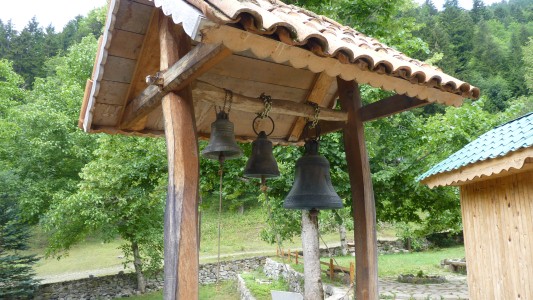
No bell tower.

The walls are predominantly "Georgia brick".
Its a "working church" and was respected as such by the handful of Georgian tourists who mostly crossed themselves and kissed the entrance on the way in.

This was just past the complex and it rapidly deteriorated.
There was little evidence of recent traffic - unlike our last Turkish adventure where we could see tracks of at least two vehicles in the previous couple of days and the all important directions.
We decided to retreat.
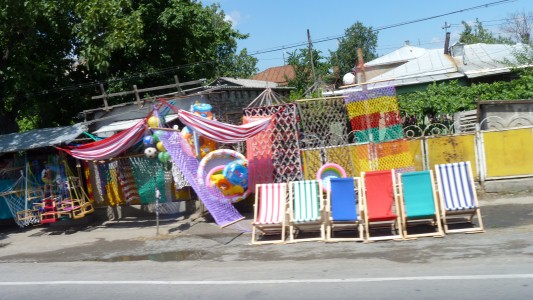
Deckchairs and hammocks.
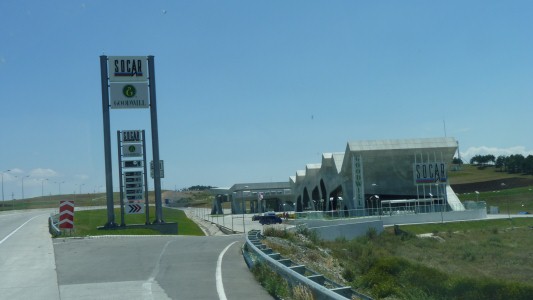
Until a few km left to Gori I can honestly say is the worst bit of traffic we've been in.
The combination of road, speed, and traffic density meant that there was just enough room for some vehicles to overtake. Long lines of traffic in both directions moving at about 75 km/hr with a few impatient drivers.
Drivers quite happy to overtake knowing there wasn't enough room to avoid oncoming traffic. A giant game of chicken.
We stopped for a rest at the very modern Socar-Goodwill services which happened to have wifi.
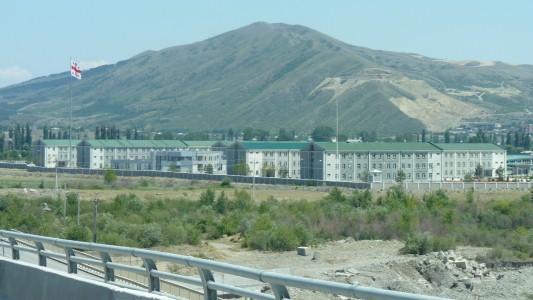
Its not too long ago that Russia and Georgia were at odds and there are still trouble spots. Georgia is a small, diverse and slightly disunited country.
We are avoiding South Ossettia and further west. We'll also avoid Chechnya and Dagestan over the border in Russia.
"Risk reduction" is to avoid likely trouble spots and to move through Georgia relatively fast.
We'll also pass rapidly through part of Ingousettia we can't avoid.
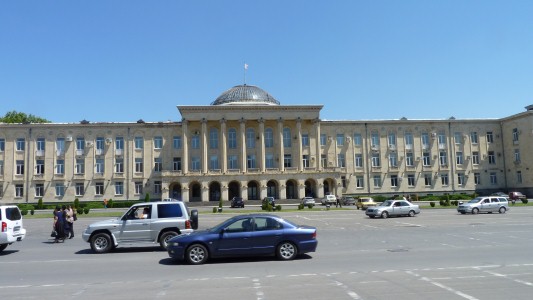
Our destination is somewhere to the east of Gori. We aren't sure which side of the river, or even which branch of the river, so asked every km or so.
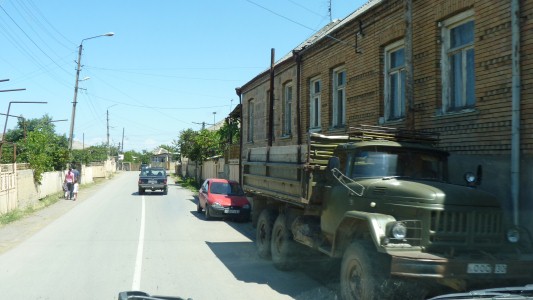
We followed.
The truck on the right is a 6 wheel drive Russian one.
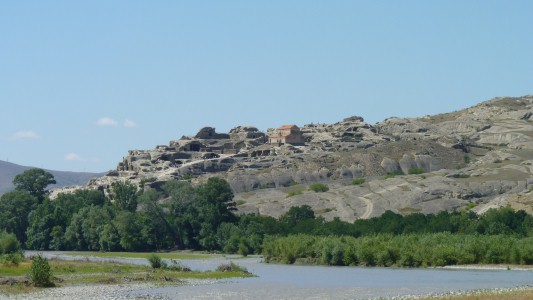
However, its reached from the south of the river across its very own bridge.About 1 km to its east.
The current village of Uplistsikhe is strung out along a couple of km of the south bank.
We were thoroughly fed up of Garmin's endless loop of "recalculating" and "please drive to highlighted route".
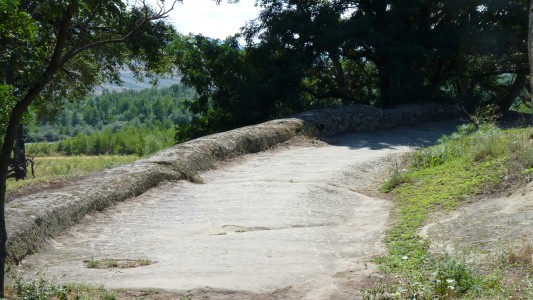
The first caves were hewn out of the rock in the tenth century BC.
The city was the religious, political and commercial center of the Georgian kingdom of Kartli - during Hellenistic (3rd to 1st century BC) and Roman (1st to 3rd century AD) times.
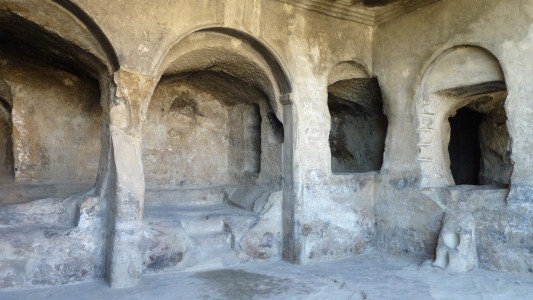
There is no information available to us.
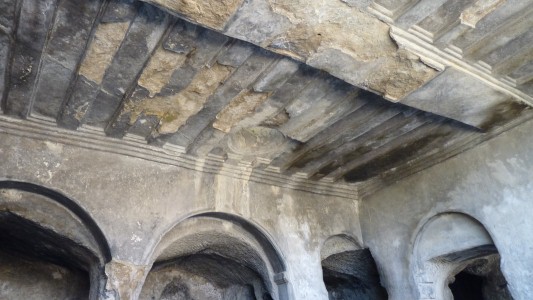
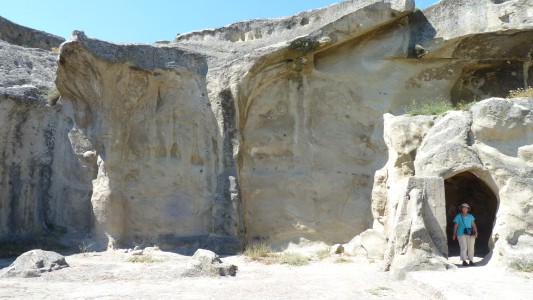
Built in the second half of the tenth century.
The site became a museum in the 1990's. The rock is lighter coloured (cleaner or just worn by people?) than the area surrounding and we are wondering what happened to all the collapsed roofs.
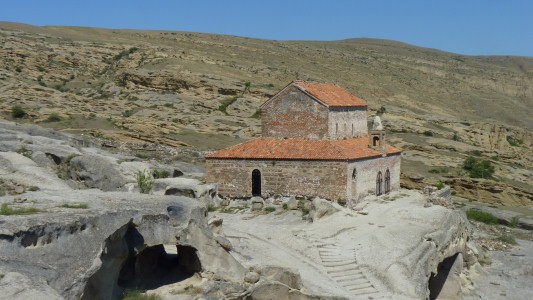
Built on top of an earlier pagan temple, to a sun god.
There's a system of channels to collect water in numerous small cisterns and wells. And steps.
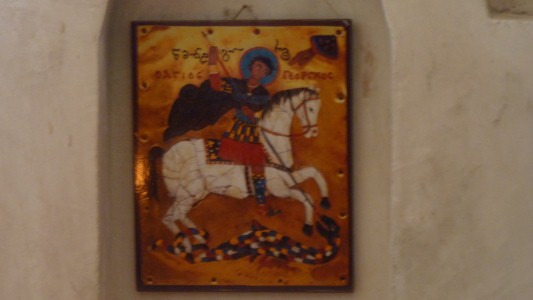
Here he is again.
More research (sigh).
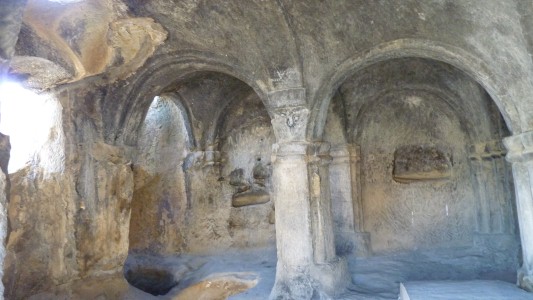
Carved as if built.
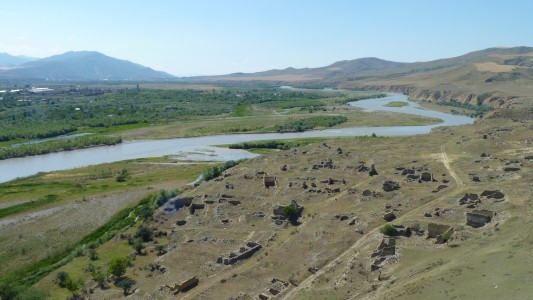
Remains of stone houses.
We've read somewhere it was a staging post for the Silk Road (or at least a branch of it) but there's no mention of that at the site.
It was abandoned after Mongol raids in the 13th and 14th centuries.
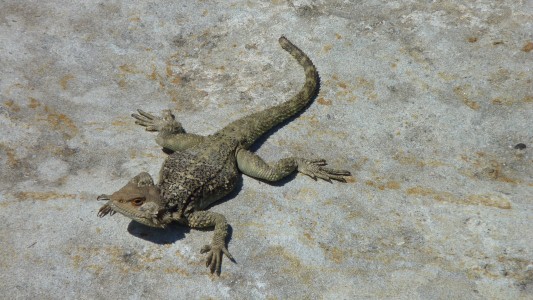
We camped in the car park.
As far as we can make out "the uniforms" sleep here. And the village is about 100m away.